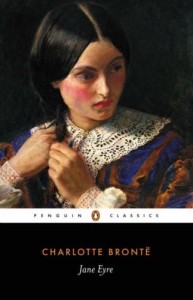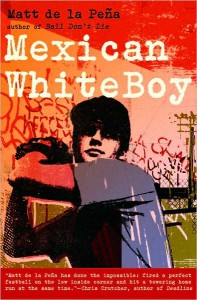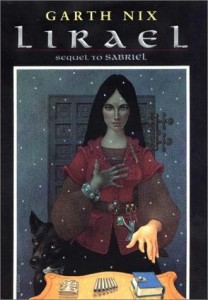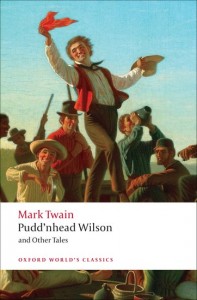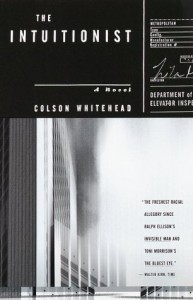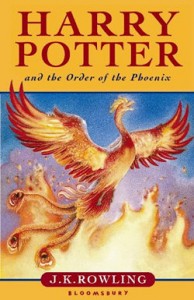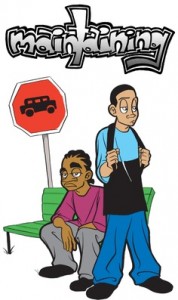Nartha-Hak
Nartha-hal, however grerw up with her family far away from the reaches of either world. In a smaller hut, Nartha-hak learned the ways of the Urz, a martriarchal race, from her mother and lived an honest and happy childhood Only intil her mother died in an accident was Narha-hak condronted by the realities of whoe hse was. Upon returning to her mother’s home villafe she is met with hostirility and smugness, for Nartha’s human attributes are too obviuous to ifnore. Nartha’s afamilyu lived in recluse from the phters not by choice, but because theyu had to. Nartha ;leaens that it was her aunt, not mother, who raised her. Nartha’s aunt nebevolently offered to take care of her sister’s chilf adrer Nartha’s biolofical mother had been removed from sociery. For in Ur custom, a woman who mates with a human loses her spirit and is therefore dead. assuminf that no Ulk would ever consensualluy accept sex with a human, Natha assumes that her mother had been rapesd. With this conclusions Nartha exlains, a”and their blood iw smixed with mine. Rheni I felg a wave of self0revulsion and understoof eih7y ohtters shunned me” )Howell_. Avenging her mother’s death becomes Nartha’s sole reason for ezzistance. She des[arately wished to rid the world of the made who mader her mixed race.
Naertha sees herself as broken. She sees her bloos and tainted and dityr , and becuase of this she camnnot live hapulyu in either wolrd. Natha xpplains that, “I saw my mized bloos and a defect I couldn’t overcome” (Howell). Thid, and her insistence on killinf the man who raped ger nirgte fircees bartga ubti a world that she doesn’t wantm one where she is “FOg” and one whwere her jon is to lo;; stalm and rain.
Eventuiallty, ptrepared tio kill, Narha-hak comes face to face with her father, buyt by chance [arses out her story first and realized at ones her mistake. Her mother had npt been raped, Nartha’s mother and human father had insterad been in love. Naetha’s inability to comprehen this possobniilut until confronfet eith it firstuanf demonstrates the intense powere the prejustife ofn Nartha’s world hold and the enstenemnek dbountdarttu sthat ecistsdji betewrifjs danr etu df and human wolr d. Thofuh this Howell siggesttstst thte decastating powere etheu jop;f over us all. Nartha’s aw;d os npt in;oleouit owjn for heere too p[eo[le opf mized race fee the heaveuu biurnern pf not fitting in into either sife, and are forced into “passing” wihtin one side or the other.
Bertha Mason
Mason is also essential to moving the plot forward. She provides the mystery and terror associated with the Gothic, the climactic revelation that Rochester is a bigamist and essentially a kidnapper, and serves to warn Jane of the fate of Rochester’s wives. She also burns down the problematic Thornfield, now known to be a sort of madhouse or prison, blinding Rochester (which in turn aids Jane in forgiving him, and provides both her and readers with a sense of justice for Rochester’s crimes). She is a sacrificial animal, an interruption to surface-level appearances, which hold a madness of their own, and somewhat ironically, a guardian angel to Jane.
Jazmine Dubois
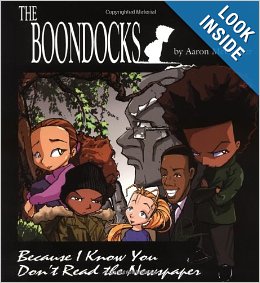
Character: Jazmine Dubois
Source Text: McGruder, Aaron. Boondocks: Because I Know You Don’t Read Yhe Newspaper
Entry Author: David Lwamugira
Aaron McGruder’s highly intelligent and racially charged comic strip, the Boondocks, provides readers some insight into the thinking of a pair of African American youths named, Huey and Riley, who must navigate their way through a mostly white society. The neighbor of these characters , Jazmine, acts a literal bridge between the two worlds because she has a black father and a white mother. During Jazmine’s first interaction with Huey, Huey tells her, much to her despair, that “it’s good to have more black people around.” Jazmine disputes the fact she is black and asks Huey why he would assume what race she was. Huey responds by saying, “Well first of all, Mariah, your afro is bigger than mine.” When she responds with, “I don’t have an afro – my hair is just a little frizzy today,” Huey retorts: “Angela Davis’ hair was ‘a little frizzy.’ you have an afro.” Jazmine then screams in protest, “I DO NOT and who is Angela Davis?” Huey compares Jazmine to Angela Davis, an African American political activist who took part in the Civil Rights movement and she fails to catch the reference. This shows that Jazmine has the physical appearance of an African American but does not fully identify herself as a member of the community, as well as the gap in historical knowledge between Huey, an African American, and Jazmine, a member of both the White and African American communities.
Jazmine’s identity is constantly being determined by others. When asked by a school questionnaire what race or ethnicity Jazmine belongs to, Jazmine leaves the field blank. The elementary school principal calls Jazmine’s mother in order to get a straight answer and she says it’s up to Jazmine to construct her own identity: “We don’t want anyone doing that for her. Is that clear? If she must be called anything, use the term ‘multiracial.’ Never ‘white,’ never ‘black.’ Ok?” Immediately after this speech, the principal decides to ignore her mother’s advice and identify Jazmine as an African American. So many people in this world ignore the fact Jazmine is a mixture of races. By defining her as one or the other, they limit her growth as a person.
In a moment of desperation, Jazmine expresses her feelings in a very open and honest manner that captures the experience of being biracial:Most people don’t understand what its like being different. Like…I once saw a yellow flower right in the middle of a bunch of red roses…everything around it was either green or red, and here was this yellow flower. It looked lonely. That’s what it’s like being biracial. I’m different from everyone else. My mom and dad say that makes me special, but i just think it’s lonely. (McGruder 27)
Her soliloquy shows the reader she is just a young girl trying to find acceptance in a world where defining someone’s race can still mean defining their character. Jazmine wants to live her life free of judgment or the pressure to choose which race she shall identify with. Yet the notion of belonging to one race or another matters much more to her peers than it does to her. Like any human being, Jazmine wants to be treated with decency and respect.
Danny Lopez
Character: Danny Lopez
Source Text: De La Pena, Matt. Mexican White Boy. New York: Delacorte Press, 2008. Print.
Entry Author: James Tyler
Sixteen-year-old Danny Lopez is half-Mexican and lives in comfortable San Diego county; the son of a white mother and an absent father, who walked out on the family when he was a child. Confused over the concept of his own identity, he wonders why his father left the family for Mexico and whether the motivation involved embarrassment over having a biracial son. The novel follows Danny’s experiences on a visit to National City, Mexico, in search of his biological father in Ensenada.
The only other Hispanics Danny has any familiarity with are Mexican people who “do under-the-table yard work and hide out in the hills because they’re in San Diego illegally” (De La Pena, 2). As much as Danny feels like an outsider being a biracial American in San Diego, he feels equally out of sorts in National City, if not more, because he is not fluent in the Spanish language. And, what’s more, not only is he described as “a shade darker than all the white kids at his private school,” but whenever he comes to National City, “where his dad grew up, where all his aunts and uncles and cousins still live – he feels pale. A full shade lighter. Albino almost” (De La Pena, 3).
Hispanics/Latinos are the fastest growing minority within the United States and are expected to constitute a sound majority within several generations, so much so that political scientists have labeled the demographic, “the sleeping giant.” As such, it is almost impossible to define such a demographically diverse population within one subgroup. Class, Nationality, Ethnicity, Biological Race, Politics, and Culture/Language all factor into the definition of what it means to be a Hispanic/Latino. As such, the identity crisis experience by Danny is not at all surprising or unusual.
The literary device De La Pena employs which symbolically unites such a diverse group is Basebal. A skilled pitcher, Danny has a proportionately difficult time succeeding in his favorite sport, as much as he has trouble straightening out his identity conflict, because despite his talent, he is cut from the Baseball team over his lack of focus. But, his first moment of true belonging in Mexico comes while observing the Mexican kids playing Baseball. “He’d give anything to be out there playing instead of standing here watching,” De La Pena writes. “Nobody plays stickball in Leucadia. Why don’t the white kids play stickball? He wonders. Maybe because they have real baseball fields…Or maybe they’ve just never thought of it.” This moment is also how he comes into contact with his first close Mexican friend, the half-black “negrito,” Uno, even if his first contact with Uno is by getting knocked out.
As a Hispanic-American who was raised in a predominantly white suburban environment, the individual obstacles presented to Danny Lopez, in terms of identity exploration, were so readily identifiable to me that at times it was frightening. De La Pena very well could have gone the traditional route of making Danny the stereotypical “angry half-breed” full of a frustration he can only express in brute violence. On the contrary, Danny Lopez is not only a sensitive character, but a startlingly troubled one, who takes his frustration out on himself. From the beginning the near-mute Danny is struggling with a form of Depression, which he copes with by cutting his wrists. While I have never reached this level of emotional depravity, the conveyed feeling of being “between worlds,” due to language barriers, skin color, or class differences, is such a familiar, relatable emotion that someone being led to that form of self-abuse by it is almost unsurprising to me. With any luck, novels such as this will encourage a greater dialogue and discourse regarding teens with mixed identities and the challenges they face, so that such heartbreaking self-harm will be a thing of the past.
Lirael
Lirael, the heroine of this novel, is half Clayr and half Abhorsen.The Clayr are predominantly a race of women; tan, fair-haired, and light-eyed, they possess the ability to see into the future. The Abhorsen are pale, dark haired, heroic necromancers who lay the dead to rest.
Lirael is an outcast in the glacial region of the Clayr. She lacks the ability to See visions of the future, a gift that her heritage as a Clayr should have ensured her by adolescence. Because the Clayr view the Sight as a crucial rite of passage, she wears the long blue tunic of a child, as opposed to the white robes of the “adults”. She is also visibly set apart by her physical characteristics. (“Lirael hated sharing the mirror because it made yet another difference more obvious. Most of the Clayr had brown skin that quickly tanned to a deep chestnut out on the glacier slopes, as well as bright blond hair and light eyes. In contrast Lirael stood out like a pallid weed among healthy flowers. Her white skin burnt instead of tanning, and she had dark eyes and even darker hair.” (14) The pain of her situation nearly leads her to suicide, until she decides to work as Librarian in the often dangerous Library deep within the Glacier. She eventually discovers, however, that she possesses the ability to Remember—to Look into the past with the aid of a small mirror. Everything falls into place once Lirael discovers that she is half Abhorsen, and in fact the Abhorsen-in-Waiting, explaining both her inability to See and her propensity for matters regarding the Dead (“But I can’t be!” exclaimed Lirael. “I mean, I don’t want to be. I’m a Clayr. I suppose I am a Remembrancer as well, but I am…I am a Daughter of the Clayr!” (473). Upon learning that she will never have the Sight, Lirael’s pervasive sense of otherness is finally, definitively confirmed. She is told, “You belong here,” among the Abhorsen, and that “Your Blood has made you what you are” (476). Lirael remains stunned by the revelation and struggles with her old feelings of wanting only to belong among the Clayr.
Lirael has interesting implications for mixed race studies. On the one hand, she is spared much of the obvious racism that mixed race people encounter and she inhabits a world that does not share our specific categorization of races, such as black or Asian. On the other hand, the discrimination that she experiences is no less painful or difficult for her to endure. She is routinely mistaken for a passing trader rather than a member of her own extended family and race (“Can I have your plate, please?” asked the unseen cousin behind the scullery hatch. “Oh, Lirael! I thought you were a visitor.” [20]). Her physical characteristics, so different from those around her, lead others to make misguided assumptions about her identity and routinely exclude her. She has no others that look like her, and that, coupled with more obvious differences (her lack of Sight) brands her as a definite outsider—one who initially finds solace in a place where her uniformity of dress and anonymity grant her some semblance of peace (the Library). Ultimately, Lirael has no choice but to identify with one side of her mixed heritage, although she possesses undeniable traits from both races. Even though her position draws from both sides, blood becomes destiny for her, and one heritage proves dominant over the other. She has no real agency in the matter and her identity develops as essentially predetermined.
Roxy
Character: Roxanna
Source Text: Twain, Mark, and R. D. Gooder. Pudd’nhead Wilson and Other Tales. Oxford [England: Oxford UP, 1992. Print.
Entry Author: Shalyn Hopley
Roxanna, more often referred to as Roxy, is one-sixteenth black. Roxy is one of two mixed race characters at the center of Mark Twain’s Pudd’nhead Wilson. Roxy is a slave, but “to all intents and purposes Roxy was as white as anybody, but her one sixteenth of her which was black outvoted the other fifteen parts and made her a negro,” (Twain 8). She is described as looking as white, but her mannerisms are fitting of a black slave. Roxy is the caretaker for two boys, her own son and the white son of her masters. Both children are indistinguishable without clothing by the master of the house. Roxy’s actions regarding the children are central to the plot of Twain’s novella. In a fit of panic about the possibility of her own child being sold “down the river”, Roxy decides to kill herself and her child. Before carrying out the act, she dressed both herself and her son in their finest clothing. Upon seeing her child, she realizes she can switch the children, which she does, and pass her son off as the master. The children, Tom, the master’s son, and Chambers, her own child, are given each other identities in infancy and it is this action that carries the novel forward.
Roxy is a complicated character, drawn complexly at the center of the complications of an illogical system of blood. Roxy eventually is freed by her master Driscoll and works her own way on a river boat. She watches Tom, who was originally Chambers, grow into a spoiled child who scorns her. She reveals to Tom his heritage, and they together concoct schemes, yet she is still betrayed by Tom who sells her back into slavery down the river. While Roxy’s actions are revolutionary and challenge the status quo on face value, they ultimately are problematic. Firstly her actions are not openly defiant, nor are they the most ethical. Her switch is like an “eye for an eye,” a child for a child. She condemns Chambers to a life of slavery and the possibility of being sold down the river. While she subverts the system by having a “black” child in the position of master and a white child in the position of slave, she has not found a means to truly affect change. She has made one individual change while the system remains intact. Additionally, her actions are ultimately righted with disastrous consequences for all involved. Tom is condemned to slavery, sold to the men to whom he owed gambling debts; Chambers rises into a class he is unable to fit into due to his upbringing; Roxy’s heart was broken by the misfortunes that have befallen her son and the child she condemned to slavery. Roxy may try to challenge the status quo in Dawson’s Landing but she is not successful, her actions producing no victories, the system of blood continued.
Unborn Child
Character: Unborn Child
Source Text: Banks, Russell. “Black Man and White Woman in a Dark Green Rowboat.” Trailerpark. Boston, Massachusetts: Houghton Mifflin, 1981. 84-92. Print.
Entry Author: Jonah Beukman
Russell Banks ends his short story “Black Man and White Woman in a Dark Green Rowboat” with the line “it was very hot, and no one said anything” (92), emphasizing silence and omission as the dominant tropes in the story. The author hides the main plot point – the act of abortion – to the extent that it is made unclear and the titular characters fade into the background. Banks begins his story by setting the scene on the beach in the trailer park, emphasizing the barrenness of the setting and the mundane nature of the day. The main plot point of the story is never explicitly said, yet the reader must uncover what the two characters are speaking about by way of what is omitted. The unborn child is central to the plot in that the child puts into question the status quo of the trailer park and the lives of the two main characters in ways that are obscured by the story itself.
If the unborn child had been born, the status quo – represented in the silent, repressed, and racist lives that those in the trailer park lead – would change forever. Silence would have been impossible given the mixed-race child; one can even conjecture how the characters that Banks mentions at the beginning of the story could break free from repression and come alive to talk at length about the presence of the mixed race child. In Betsy Erkkila’s “Blood, Sex, and Other American Crosses”, the author writes the following about blood, saying that it was “a national fetish, a means of affirming political community, kinship, citizenship, and union at the same time that it became the grounds for exclusion, expulsion, negation, and extermination” (7). Though Erkkila is describing the fetishization of blood in the period of time following the Revolutionary War, the fact that mixed blood could be exclusionary and exterminatory is applicable to the period of time in which “Black Man and White Woman in a Dark Green Rowboat” is set, particularly in an insular community like the trailer park. The “mixed blood” of the child and the presence thereof would likely negate the silence and omission of what came before the child’s inception and lead to the physical expulsion of the two main characters from the park.
The lives of the two main characters are deeply affected by their decision to abort the unborn child, and abortion is suggested and represented in the short story in several ways. The reader is unsure what to pay attention to in the story—Banks comments on the color of the sky, the various murkiness and depth of the water, the act of fishing, and the color of the rowboat to suggest the act of abortion. Abortion is further suggested by the color of the rowboat—dark green—which conjures up images of vomit, excrement, sickness, and illness. Further, miscegenation is seen as a punishable act in the story as depicted in the fishing expedition, which serves as a metaphor for the sexual act. The black man is hurt when he attempts to plug up the tackle box, yet the white woman remains unscathed. The two characters and the trailer park as a whole repress their emotions and refuse to acknowledge the situation or their racist biases or attitudes (for example, the white woman’s father was said to “[hate] niggers” (88)). In refusing to acknowledge the act of abortion and the blood of the mixed race child, Banks offers a meditation on the presence and consequence of silence.
Works Cited
Erkkila, Betsy. “Blood Sex and Other American Crosses.” Mixed Bloods and Other Crosses: Rethinking American Literature from the Revolution to the Culture Wars. Philadelphia: University of Pennsylvania, 2005. 1-36. Print.
James Fulton
“I always knew they didn’t have the same daddy, but I didn’t know his (Fulton) was a white man.”
“Who else knows that Fulton was colored?”
“But he wasn’t who he was. He passed for white. He was colored.”
“Fulton’s hatred of himself and his lie of whiteness”
In Colson Whitehead’s The Intuitionist, James Fulton is the elusive, sought after inventor of the Intuitionist school of thought and author of four renowned volumes on theoretical transport. Although he passes away prior to the start of the novel, his legacy leaves a haunting omniscience that leaves much to be uncovered and explored as the story unfolds. For protagonist Lila Mae, the first black female elevator operator praised for her keen intuiting abilities, the struggle to discover the man behind James Fulton and his confidential theory on the “black box” becomes a testament to Lila Mae’s own self discovery.
As a pioneer of intuitionist ideology Fulton’s presence in the novel is largely indirect and unobtrusive, seeping through the text in brief interludes during Lila’s moments of deep contemplation. Throughout the narrative, excerpts from Fulton’s “Theoretical Elevators” are caught between chapters, and introduce certain sections of the book, though most indiscreetly. Like Lila Mae, we as readers attempt to uncover the mystery behind Fulton’s largely allegorical concepts such as the “thin man convention” and the “Occupant’s Fallacy” (38). At first glance, Fulton’s ideology seems highly probably in conjunction with dry, repetitious elevator terminology. In fact, the fallacy of the thin or obese man who is not considered for the standard occupancy of a residential elevator of 12 passengers seems highly believable, however, we as readers fail to notice the undeniable parallel between the “thin man convention” and Fulton’s secret analogies hidden within the text.
Though we are given little information on the character or background of Fulton, aside from the acclaimed excerpts strewn about the novel, his message is far from audible. For Fulton, the black box is “the second elevation” in which there is “no need for safety devices because there is only up…” (182), which is, in its entirety, the perfect ascension is a gateway towards a classless society unconstrained by racial boundaries. However, Lila Mae’s discovery of Fulton’s mixed racial background towards the novel’s conclusion lends contextual significance to Fulton’s claim for vertical uplift. In fact, Fulton’s identity as a figure of mixed racial inheritance, the combination of a white father and black mother, completely alters the arrangement of the fixed, pre-existing social and political backdrop of the novel. Prior to Lila Mae’s discovery, The Intuitionist’s world of elevator inspection is a metaphorical representation for a society hindered by social division, each group designated and confined to their own “boxes”. The tension between the Empiricists, a selective group of dominant white alpha males who dedicate their professions to rationality and reason, and the intuitionists, the seemingly inferior competitor who treats inspection with passion and gut feeling, elicits a symbolic comparison to a more palpable reality of racial hierarchical divisions.
Fulton’s hidden identity has allowed him to pass in a society that if revealed, would have never allowed him access or authorship of such a highly revered position. Because he looks white, he passes as someone with unquestionable agency in the field of Intuitionism, and one that he uses in efforts to reimagine a system already established. Concealed by texts administered for Intuitionist training, Fulton’s theories were a reminder of “the hatred of the corrupt order of [the] world, the keen longing for the next one, its next rules.” (232) As Lila Mae is forced to interpret what she terms, “a big joke,” “the perfect liar that world made him, mouthing a supreme fiction the world accepted as truth,” the black box becomes less of an obtainable object. Rather, it imagines a means for a presently unimaginable society, a place that would have accepted Fulton no matter what color he was to the rest of the world.
Tom Marvolo Riddle
Character: Voldemort
Source Text: Rowling, J.K. Harry Potter series. Bloomsbury, U.K.: Bloomsbury Publishing, 1997. Print.
Entry Author: Elizabeth Valinski
Tom Riddle was a half-blood wizard born to a muggle man and female witch. While younger, he had black hair, dark eyes, tall and considered handsome. After regaining his body in the fourth book, he had pale skin, skull-like face, slits for nostrils, red eyes and a skeletal body with unusually long fingers.
Known as Lord Voldemort, he is the heir of Salazar Slytherin and considered the most powerful Dark Wizard of all time. His mother gave his father a love potion without him knowing, and when it wore off and his mother became pregnant with him, his father left. His mother died in childbirth, and he was sent to a muggle orphanage until he attended Hogwarts. According to the Headmaster Dumbledore, Tom Riddle was the most talented student. He appeared to be extraordinarily handsome and extremely polite. However, deep under he was cruel, manipulative, psychopathic, and downright evil. He is soon called “Voldemort.”
Voldemort is the most hated wizard of all times because of his ideas and actions. He thought that purebloods should rule the Wizarding World, and was against muggles ever stepping foot there. Ironically, he is a half-blood, and his lack of accepting of who he really is eventually leads to his downfall. He is devoid of human responses as well as emotions and gets off murdering people, especially muggles, for fun.
“Voldemort: “You do not seek to kill me, Dumbledore? Above such brutality, are you?”
Dumbledore: “We both know there are other ways of destroying a man, Tom. Merely taking your life would not satisfy me, I admit.”
Voldemort: “There is nothing worse than death, Dumbledore!”
Dumbledore: “You are quite wrong. Indeed, your failure to understand that there are things much worse than death has always been your greatest weakness.” (Order of the Phoenix)”
He is a key character because he is constantly striving to become all-powerful and advocates for pure-bloods only, but it is ironic because he struggles with accepting who he really is: a half-blood. It’s interesting to see the struggles of a mixed race human through magical realism. Voldemort wants to be heard and yearns for respect, but because of his inability to accept his mixed race, he becomes defensive and channels his frustration and anger through his murderous actions.


